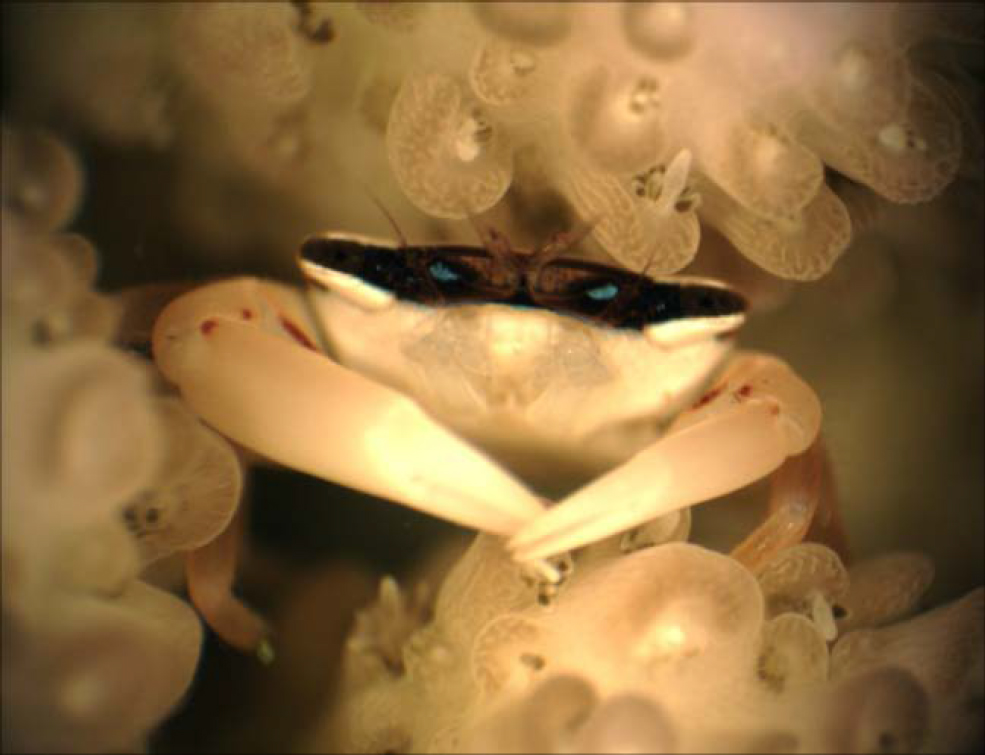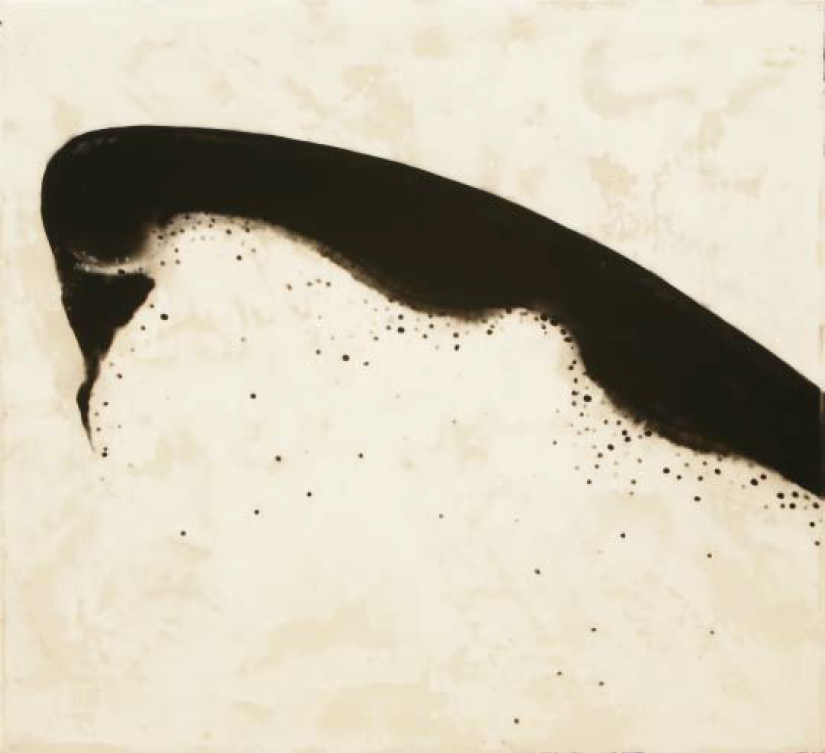Moorea: The Coral Reef Community
Tetralia ocucaerulea Crab
Moorea
From the researcher's perspective...
It was not the crabs that I noticed on my daily swim over corals near the Gump Station in Moorea—it was their handiwork. Small corals just off the shore were either healthy and thriving, or dead covered in silt and sand. The difference? Found between the branches of healthy corals, are small white crabs with black masks, madly cleaning away any debris that lands on the coral. These are Tetralia ocucaerulea, commonly known as Zorro Crabs.
Named from the Latin 'oculus', meaning eye, and 'caeruleus' for the sky blue lines on its eyestalks, it is the distinctive black Zorro-like mask that reflects the spirit of Tetralia ocucaerulea. They are the fierce protectors of Acropora corals, defending them from the dangers of sediment build-up that would otherwise damage and smother coral tissue. This protective tendency is not unique to this species—others do it, but none with the same fervor as Tetralia ocucaerula. Young and old, these crabs are adamant about keeping their host corals clean.
Tetraliid crabs are dorso-ventrally flattened—making it easier to move laterally between tight coral branches. Color patterns on the 'face' of these crabs are key taxonomic characteristics and important in advertising their species identity to other coral symbionts.
Tetraliid crabs are found throughout the Indo-Pacific region from the Red Sea to the east coast of Africa and to French Polynesia. Tetralia ocucaerula has been recorded in Guam, Moorea, and the Northwestern Hawaiian Islands.
Chris Meyer, Seabird McKeon, Hannah Stewart, and Matthew Johnson
DNA Barcode of Tetralia ocucaerulea
Accessed from Barcode of Life Data Systems
MBMIA351-06 | 10298 | Tetralia ocucaerulea | COI-5P
TATTTTATTTTTGGAGCTTGAGCCGGTATAGTTGGAACGTCCTTAAGTCTAATTATCCGAGCAGAATTAGGTCAA CCCGGAACTCTAATCGGCAATGACCAGATTTATAATGTAGTTGTAACCGCTCATGCTTTCGTAATAATTTTTTTC ATGGTTATACCAATTATAATTGGAGGATTTGGTAATTGACTTGTACCCCTGATATTAGGAGCCCCTGATATAGCA TTTCCTCGTATAAATAATATAAGAKTTTGACTTCTTCCTCCATCTTTAACGTTACTTTTAATAAGAGGTATAGTA GAAAGAGGTGTTGGCACAGGATGAACTGTATACCCTCCGTTAGCTGCTCCTATTGCTCATGCTGGCGCTTCAGTT GATATAGGAATTTTTTCTCTTCATTTAGCAGGGGTTTCTTCTATTTTAGGAGCAGTAAATTTTATAACAACCGTT ATTAACATACGTTCCTTTGGTATAGCAATAGACCAAATACCTTTATTTGTTTGAGCTGTATTTATTACTGCTATT TTACTTCTCTTATCTTTACCAGTTCTAGCAGGAGCTATTACAATGCTTCTTACAGACCGAAATCTTAACACATCA TTTTTTGATCCTGCAGGTGGAGGTGATCC


